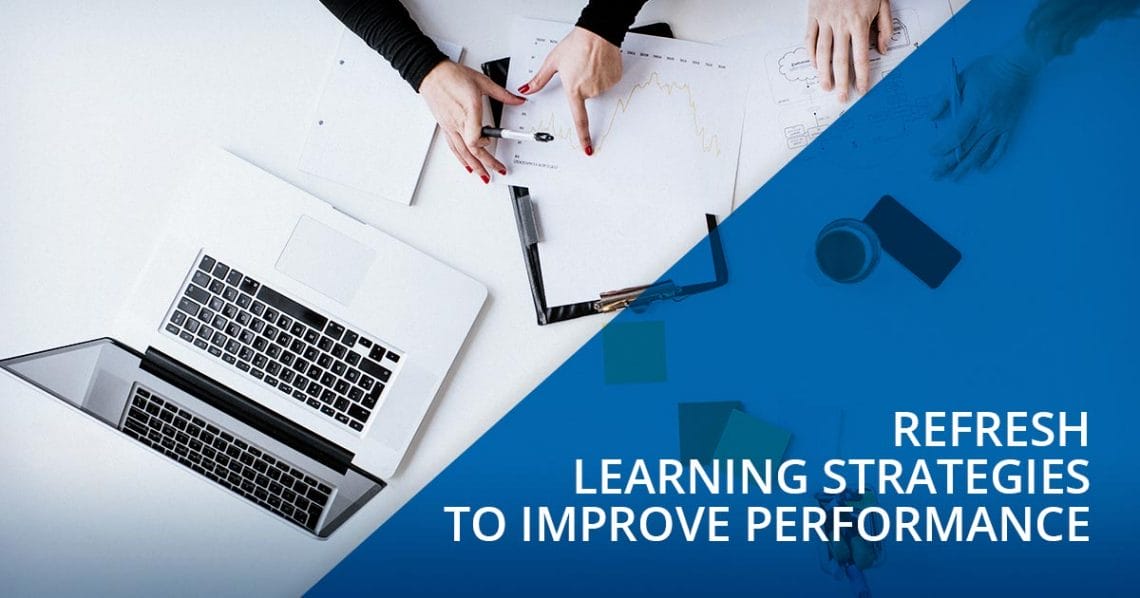
Improve Business Performance by Revisiting L&D Strategies
To train and retain a capable, confident workforce, organizations need to establish a functional Learning and Development (L&D) strategy. It’s something we’ve discussed at length here at the Docebo blog. Some young, fast-growing organizations may be in the throes of pulling such a strategy together while other large, established businesses may have a long-standing strategy that, to date, has worked for them. And others — typically small businesses — may have no strategy to speak of at all.
These facts are bolstered by a Brandon Hall Group report that Docebo will present in a matter of weeks. The paper, State of Learning and Development 2016: Ready to Evolve, indicates that among organizations surveyed, 14 per cent have no L&D strategy. Though these numbers reflected smaller organizations, nearly 10 per cent of organizations with over 10,000 employees and a quarter of organizations with fewer than 1,000 employees also had no strategy.

But that’s only part of the picture. You can have an L&D strategy in place and find its actual effectiveness to be lacking. This is something the report reinforced, revealing that more than half surveyed (54 per cent) felt that their L&D strategies were only somewhat effective at meeting business goals, and only eight per cent viewed their strategies as “very effective”.
This points to the fact that, even when an L&D strategy exists — whether or not it is fresh or collecting dust — many businesses question the actual value it has for their organizations. To this end, in order to achieve continual improvement in learning, it is of vital importance to revisit learning strategies on a regular basis.
Start with the following four key questions to determine whether it is time to re-evaluate your L&D strategy in order to craft a strategy that provides a measurable, demonstrable impact on business performance.
1. Is your L&D Strategy Robust Enough?
It is one thing to develop a simple L&D strategy and quite another to cultivate one that is comprehensive and robust. For example, Brandon Hall Group’s 2016 Learning Strategy Study assessed organizations across five tiers of L&D strategy effectiveness. On one end, Level 1 respondents identified themselves as low-performing organizations with barely existent L&D programs that were not linked to the business. On the other end, Level 5 businesses considered themselves high-performing organizations with formalized L&D programs tied directly to business objectives and outcomes. Across the board, there’s a correlation between high levels of organizational performance and the effectiveness of L&D strategies in terms of achieving business goal: when strategies are clearly defined and aligned with business goals, there’s a much better chance of improving overall performance.
What’s also important to note is that most high-performing organizations surveyed indicated they had a formalized learning strategy linked directly to business objectives that also took advantage of an array of other learning modalities and technologies.
So as you look inward and ask yourself whether your existing strategy is robust enough, it is important to hone in on two other key criteria: is it tied to definable, measurable business objectives and does it take advantage of an array of traditional and informal learning approaches.
2. Are you Targeting the Right Skills and Competencies?
While many companies have taken the effort to identify critical skills and competencies, capabilities required, and supporting learning content within L&D strategies, few find they are actually effective at accomplishing these things.
Brandon Hall Group’s report substantiated this, revealing that more than half of organizations not identified as high-performing organizations felt they were effective at achieving the above. So, if you doubt the effectiveness of your L&D program, one area to hone in on would be skills, competencies, capabilities and content, and how they relate back to business objectives. This doesn’t mean you have to go back to the drawing board with your L&D strategy. It simply represents an opportunity to ensure the strategy is targeting the right areas.

3. Are you Presenting Enough Learning Opportunities?
Traditional, instructor-led, classroom-based training tends to dominate the landscape of L&D today as it has for years. This is in spite of the fact that, in addition to a wide array of available learning modalities, organizations realize they need to take advantage of more frequent, ongoing learning opportunities to improve job effectiveness.
The Brandon Hall Group Learning Strategy Study revealed that the majority (over 60 per cent) of companies surveyed expected employees to have learning opportunities very frequently (weekly or daily). However, while such frequency may be desirable and attainable, maintaining these levels can be very challenging. This means employers simply have to rethink L&D strategies and the kinds of learning opportunities they provide — opportunities that can lie well outside the traditional box. Which leads us to our next point.
4. Do you Take Informal Learning Seriously Enough?
We’ve spilled a lot of ink on the value of blended learning and non-traditional learning modalities in recent posts. Indeed, a large chunk of effective, sustained learning takes place outside of the classroom, across new, evolving, and emerging channels and environments.
The Brandon Hall Group study reinforced the value of non-traditional learning approaches, indicating that, across the board, high-performing organizations use blended-learning approaches that marry formal, informal and experiential elements, as well as learning opportunities outside of the classroom (e.g. online, on-the-job, one-on-one). These organizations also have found that personalized learning experiences relevant to a learner’s needs are simply more engaging and effective than traditional means.
The takeaway here is that organizations with an L&D strategy that is over-reliant on traditional methods need to look outside of the box in order to improve learning experiences and outperform the competition.
